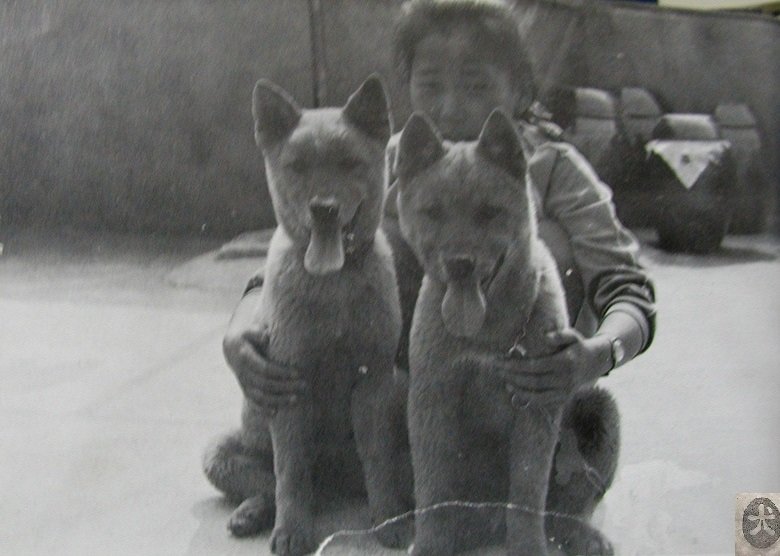History & Utilization
Origin & History

The Korea Jindo Dog is an old breed that originated from Jindo Island off the southwest coast of South Korea.
Although there is no clear answer as to where and when exactly this breed originated, we know a few theories.
Some writings say it is a breed that originated in Southeast Asia from dogs that can be said to be descendants of dogs bred by Stone Age people.
There is a theory that Jindo was brought by a trade ship from the Southern Song dynasty in China, but there is another strong theory that it was brought from Mongolia to protect military horses on Jeju Island when the Sambyeolcho Rebellion broke out in 1270. That’s how he became today’s Jindo dog, keeping his relatively pure character in isolation from the continent.
It is said that the Japanese were the first to designate Jindo as a natural monument.
During the Japanese colonial period (1910-1945), the “destroying of wild dogs” that was imposed by the Japanese to obtain fur for use in war led to the disappearance of many indigenous breeds. However, the dog Jindo managed to survive thanks to its registration as a natural monument.
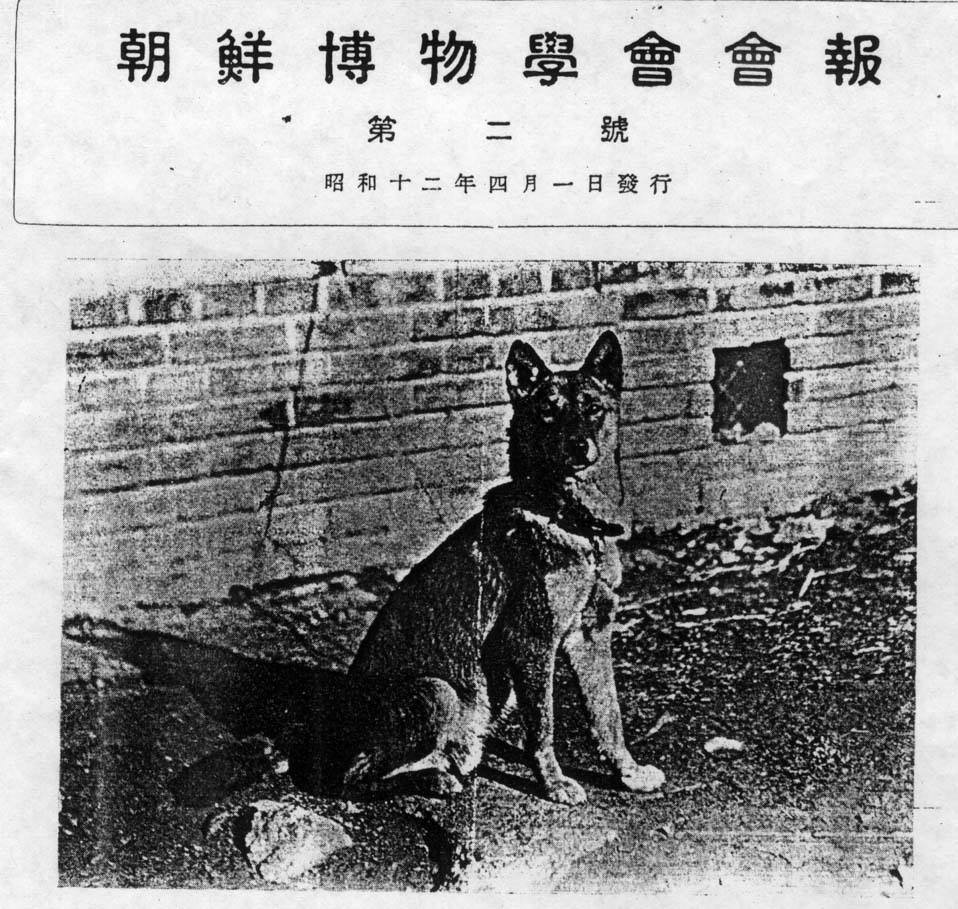
In 1936, animal and plant researcher Tamezo Mori called Jindo a “famous dog” and applied for registration. At that time, there was an “indigenous dog protection movement” in Japan, and Jindo closely resembled the Japanese dog Kishu.
On the left – cover of Professor Mori’s report showing the Jindo dog.
In 1962, the breed was (again) recognized as a natural monument and #53 National Treasure, but this time in its country of origin and protected by the Act on the Protection of Cultural Property.
Every year on May 3 (5.3), “Jindo Dog Day” is celebrated. The largest event takes place on Jindo Island, where there is a breed promotion center, theme park, museum, specialized Jindo kennel, etc.
Visitors can also see special Jindo performances with their owners, dog races or agility shows. One of the most important Jindo dog shows is also held there.

In 1988, Jindo dogs took part in the opening ceremony of the Olympic Games held on the Korean Peninsula.
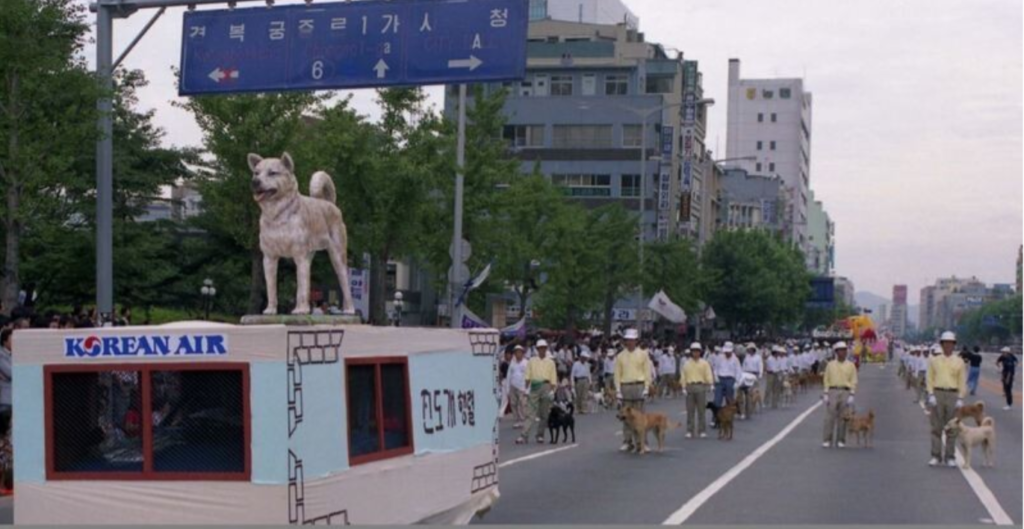
Since 2008, the responsibility for issuing blood purity certificates is The Jindo Dogs Guild of Korea, which is responsible for monitoring the entire population of the breed in Korea.
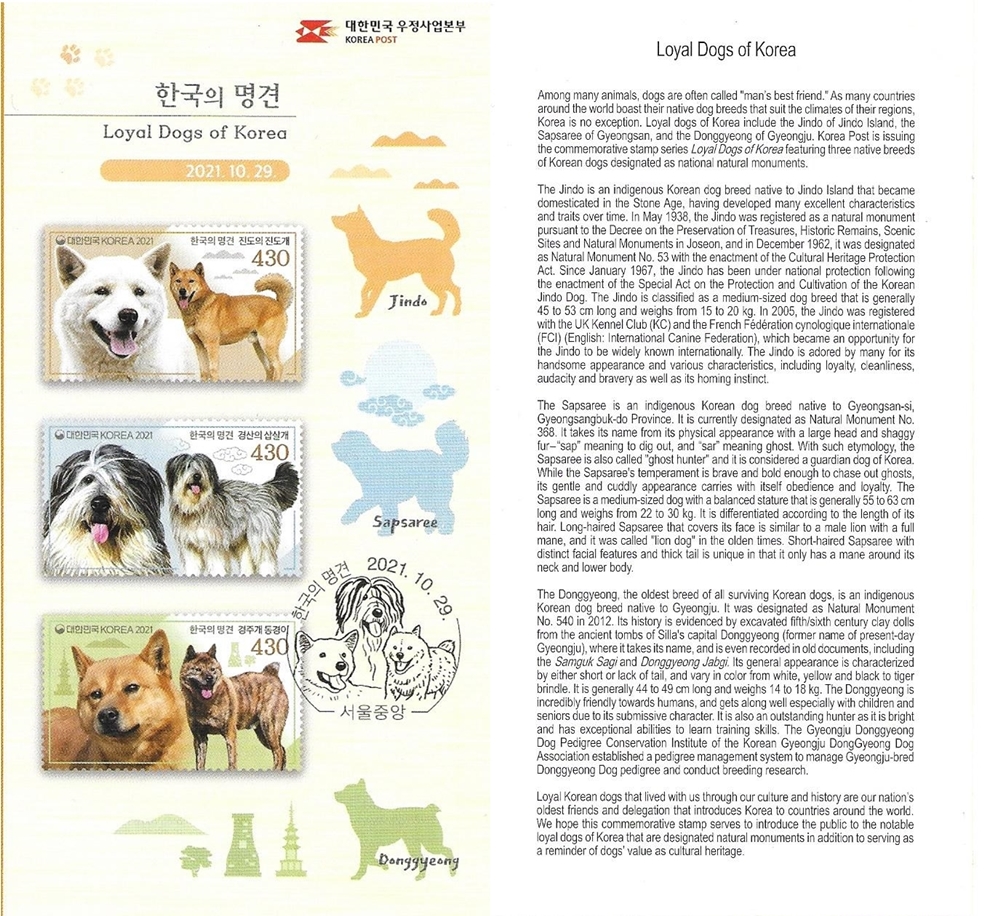
On October 29, 2021, the Korean Post Office issued stamps depicting the silhouettes of three of the six Korean dog breeds; Jindo, Sapsaree and Dongyeonggi.
In addition to the photos, there are short descriptions of each breed.
Utilization
It is said that the breed was created by nature, they are active dogs that excel in many aspects of an active life.
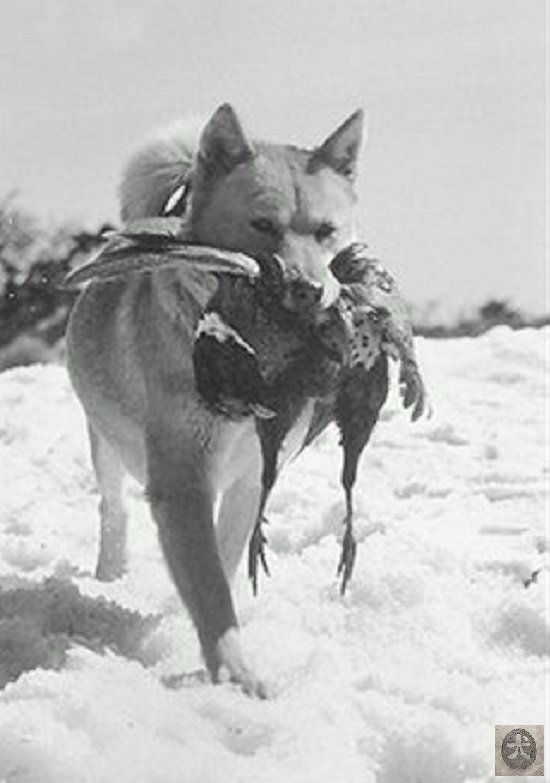
- Hunting
Jindos are excellent hunting dogs that have a natural instinct to return prey to their master. They train their abilities from an early age, starting with mice or birds, and then, for example, rabbits.
They often traveled around the island for a long time, so they developed a natural homing ability, thanks to which they could easily return home.
- Guarding
Through free evolution on a closed island, the Jindo have learned to establish and protect their territories among themselves. They are wonderful guard dogs with an excellent memory and intelligent not to attack ‘their’ animals or people. They will not hesitate to defend their owner if he is in trouble, unless the owner makes it clear that nothing is wrong.
- Features common to all Jindo
They are very clean dogs that have a natural instinct to do their business away from where they sleep.
They are very wary of food that is given to them by a stranger, and of prey that they have not hunted themselves.
They are very sensitive to rank and this has its roots in the Korean home where rank and hierarchy are expressed verbally, non-verbally and even in meals. The dog will instinctively search and try to fit into the hierarchy in the home, both in the canine and human pack.
